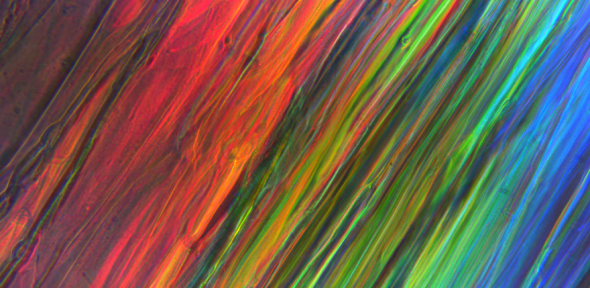In our lab at the University of Cambridge, we study how living things use their internal structure to change their appearance. What we see in the natural world inspires us to find new ways to make colourful, sustainable materials. Our goal is to make colorants – things like dyes and pigments – that are cheap, durable, non-toxic and biodegradable.
Nature is overflowing with beautiful colours, from the camouflage of chameleons to the dazzling tail-feathers of peacocks. The way these creatures look depends on how their bodies interact with the different colours that make up white light. Many of the colours seen in nature are produced by pigments – special chemicals in the skin, fur or exoskeleton of the organism which absorb some colours and reflect others.
However, the most spectacular colours in nature are made in an entirely different way, using a phenomenon called light interference. If you’ve ever noticed the pinks and blues glistening on the surface of soap bubble, then you’re already familiar with this effect and the kind of beautiful colour it can produce.
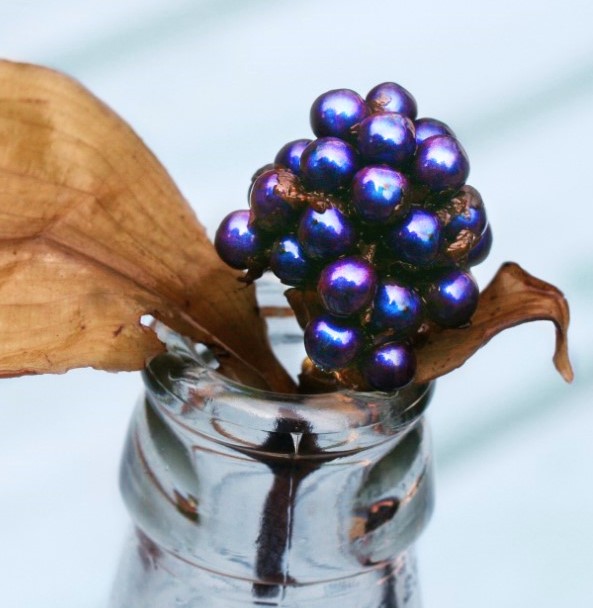
Over millions of years of evolution, living things have developed complex structures in their outer layers which use interference to enhance some colours and dissipate others. This so-called structural colour is responsible for the most intense reflection found in nature, the fruit of the “marble berry” (Pollia condensata). Structural colour is found in almost every kind of living thing; you may be familiar with examples like iridescent green dock beetles (Gastrophysa Viridula) or mother-of-pearl.
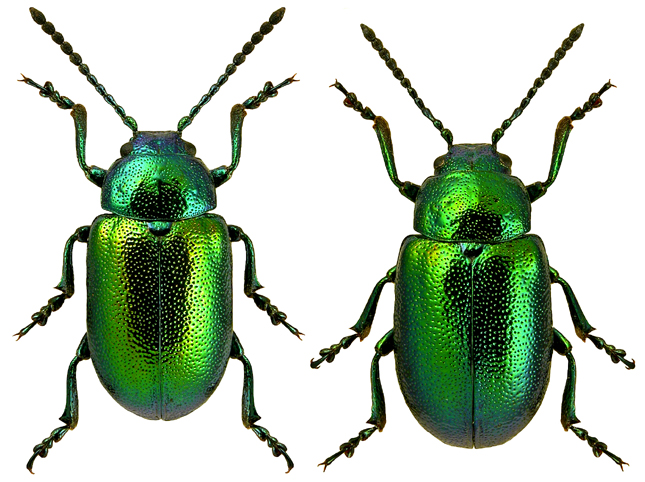
Colours are an important part of daily life for humans too. We use dyes in our clothes, and paints for decoration and design. Complex colour patterns are used to prevent counterfeiting, like the shiny “holograms” you might have seen on bank notes and credit cards. However, these sources of colour have their drawbacks: they’re often made from chemicals and plastics that fade over time and can’t be recycled.
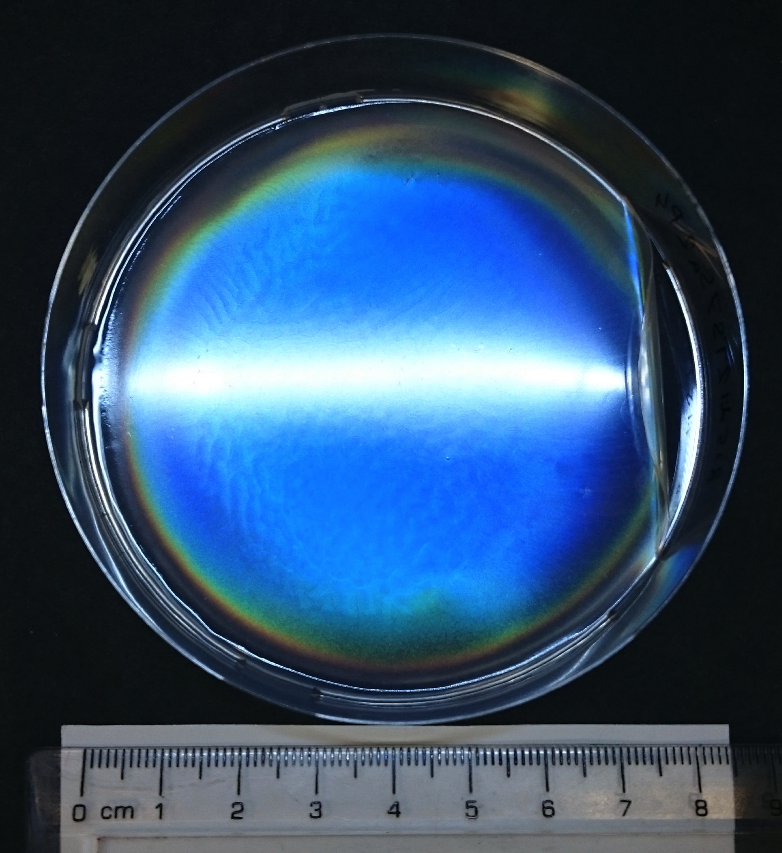
To find more sustainable sources of colour, we look again to what we see in nature. The colours in nature are often built up from simple biological “building blocks” – things like cellulose (found in plants like cotton and pine trees), chitin (found in fungi and crustaceans) and keratin (found in bird feathers and human hair). These bio-materials are highly abundant, biodegradable and non-toxic, which makes them perfect for producing more eco-friendly colorants. In fact, they’re even edible – you eat cellulose every time you eat an apple and chitin every time you eat mushrooms!
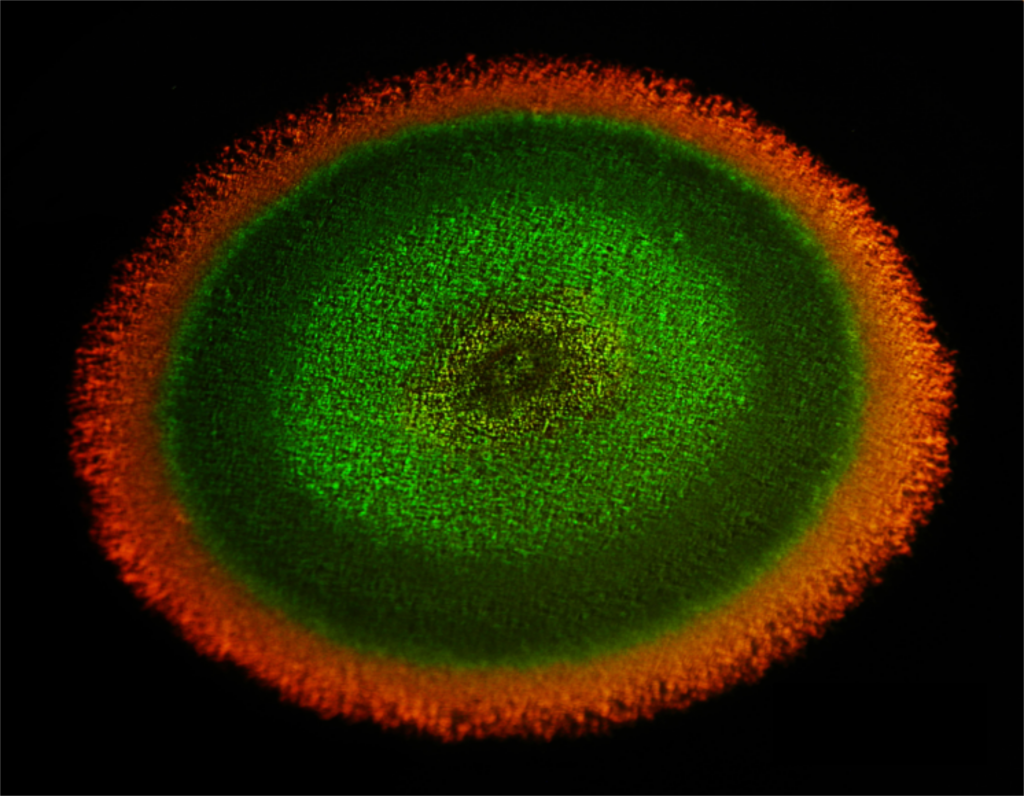
In our exhibit, we will show you some examples of the dazzling structural colours that you can find in beetles and other creatures. We will also show you how nature inspires us to create our own colourful materials in the lab using simple biological building blocks.
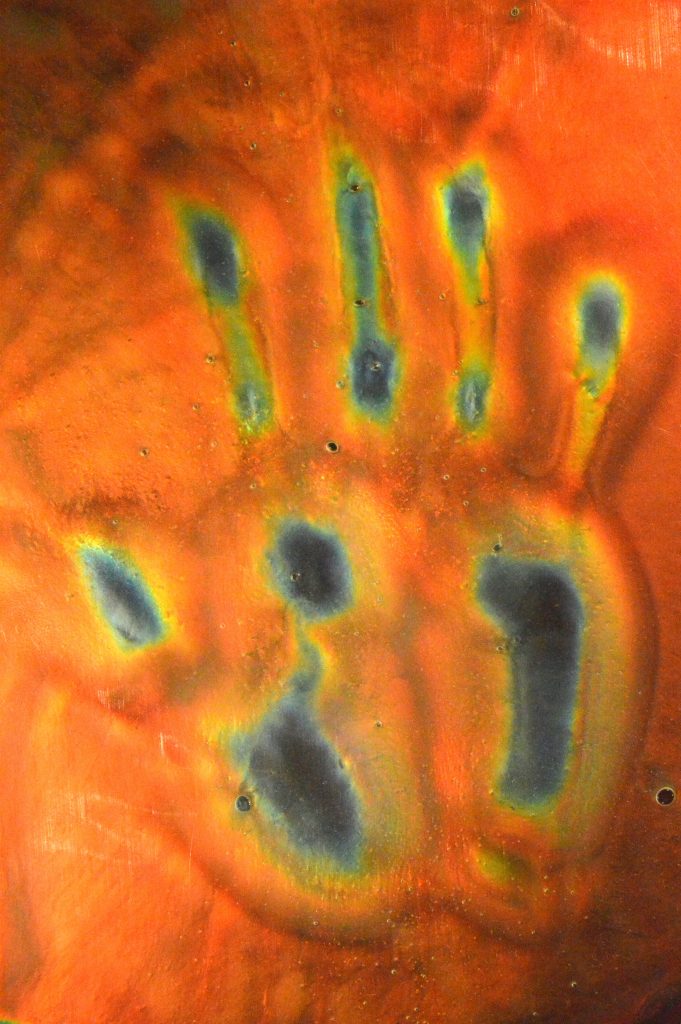
Can a sustainable future be colourful? took place at the Science Museum as part of our season of events celebrating 150 years of the periodic table.
